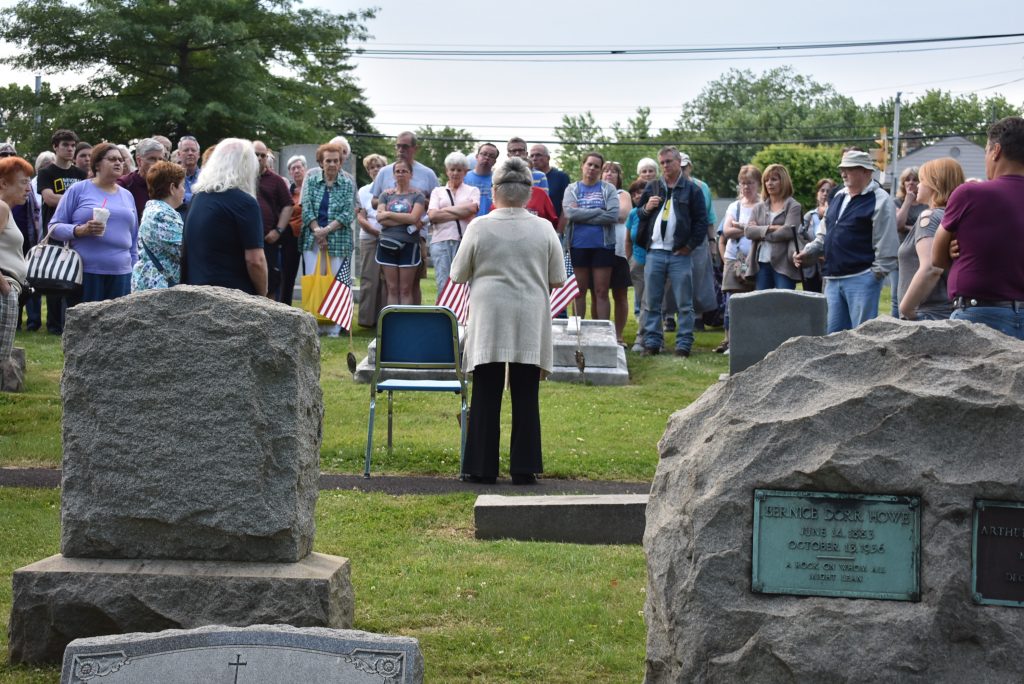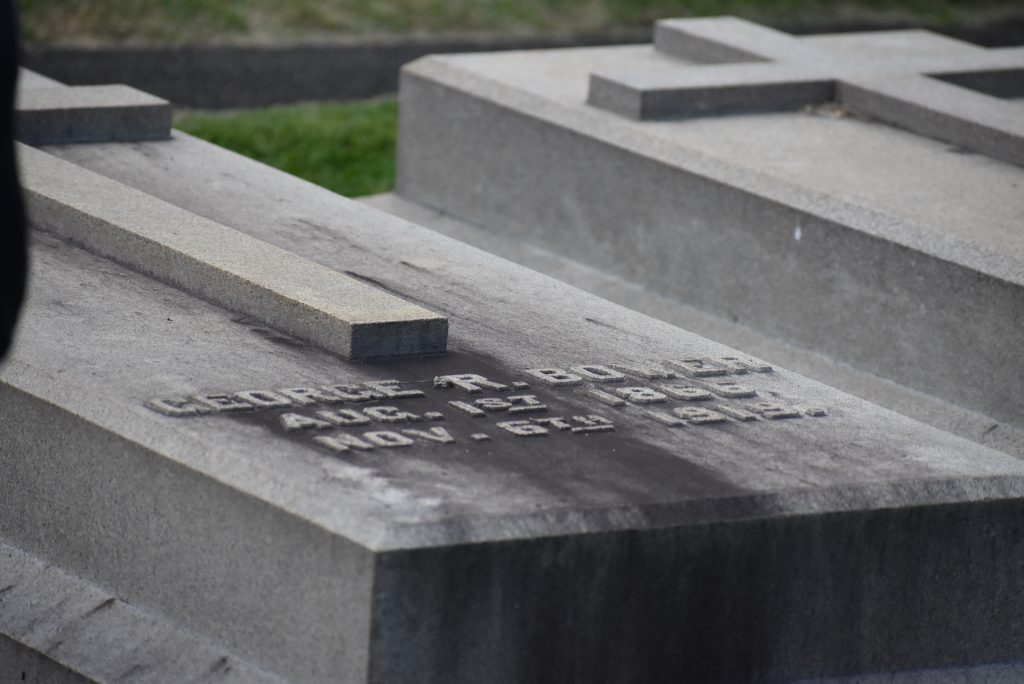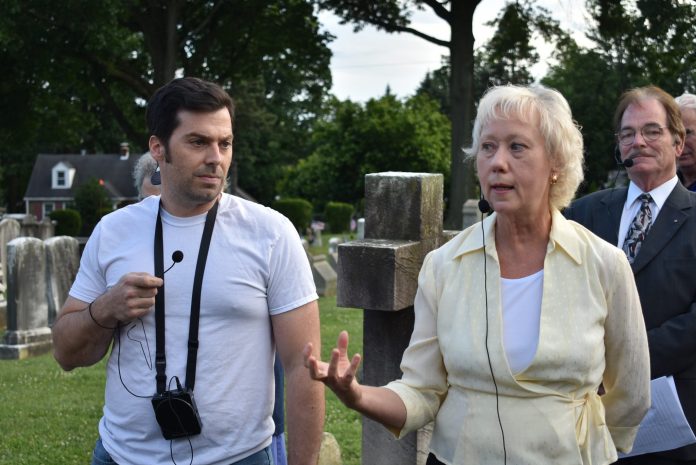S___UEL M. WETHER__.
DIED _UNE 14, 18__.
AGED 39 YEARS.
The text on the gravestone was barely legible, long ago eroded and covered by greenish-brown algae and lichen. If the text were clear it would denote Samuel M. Wetherill, the third generation of the Wetherill & Sons White Lead Factory, one of the first such companies in the country. Wetherill, who was also a lobbyist for American iron and railroads, lies buried at All Saints Episcopal Church in Torresdale, buried in 1840.
Luckily, his gravestone will soon be entirely legible once more. Representatives from Materials Conservation sprayed the stone – which also serves as a marker for Wetherill’s children – with a chemical biocide, the components of which they could not reveal (it’s acid-free and sits at around 9 on the pH scale, they divulged).
The spray worked immediately, creating an orange mist that signaled the algae on the stone was dying. The biocide natural, biodegradable, doesn’t harm the plants, and in two months and a couple rain showers, it’ll have the white marble stone looking brand new.
“If you go 20 miles out of the city, these marble stones would look so much different and in better shape,” said Seth Gartland, conservation specialist and project manager for Materials Conservation. But because of factors like acid rain and air pollution in the city, marble stones wear down much faster here.

Approximately 100 people witnessed Wetherill’s stone cleaning last week as they embarked on the church’s first ever Chemistry in the Graveyard tour. In addition to the stone-cleaning demonstration, attendees heard about the lives of several figures who were prominent in the science and chemical fields who are buried at the church.
Take Wetherill for example. Samuel Mordecai Wetherill was a difficult figure for historian Debbie Klak to track down. His grandfather Samuel started the first white lead paint company in America, where he worked for a short time before his father passed away and he became a lobbyist for American iron with his cousin, who was the chairman of the Pennsylvania Railroad.
Wetherill was also a trustee of Lower Dublin Academy and attended All Saints in the original structure of the church, which stood where the graveyard currently is. He married and had seven babies with his first cousin. He had a house on Linden Avenue, between Torresdale and Frankford avenues.

Samuel the grandfather moved to Philadelphia in 1760 and devised a process for heating and chemically treating raw lead ore to produce a lead powder, becoming the first white lead paint supplier in possibly the world. He fused the powder with linseed oil and other chemicals to create many types of paints, selling the first paints already mixed in the can.
Health officials pushed for a ban on lead used in paints between the 1940s and 1960s, but it didn’t hurt the Wetherills as the largest suppliers of paint to the government, which allowed it to continue to be used in their coatings.
The tour took attendees around the entire graveyard, learning about figures such as George R. Bower, who served as president of the Henry Bower Chemical Manufacturing Company, and George’s son Henry.

Keeping stones from being eaten by lichen does not come without a cost. It costs $55 for a gallon of the biocide, which can clean about two stones the size of Wetherill’s (whose was quite large as a status symbol), or four small stones. Then comes the restoration, which can include pinning and painting the stone. In a graveyard such as All Saints’, which has recorded burials all the way back to 1786, gravestone upkeep can be a timely and expensive process.
The cleaning of Wetherill’s stone will last for about two years. Ironically, cheaper brownstone graves will last longer in a city like Philadelphia than the more expensive marble graves, Gartland said.
“Somebody who had this [marble stone] was probably pretty wealthy, and the poor person who had to buy a local brownstone had their stones last so much longer, and you can read the inscriptions so much better,” he said.





